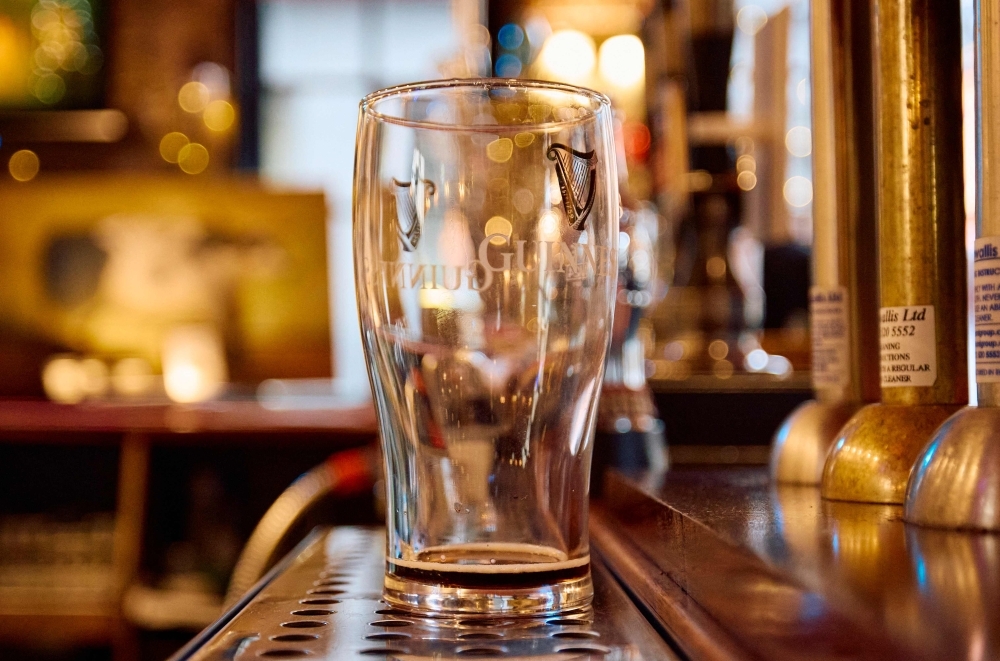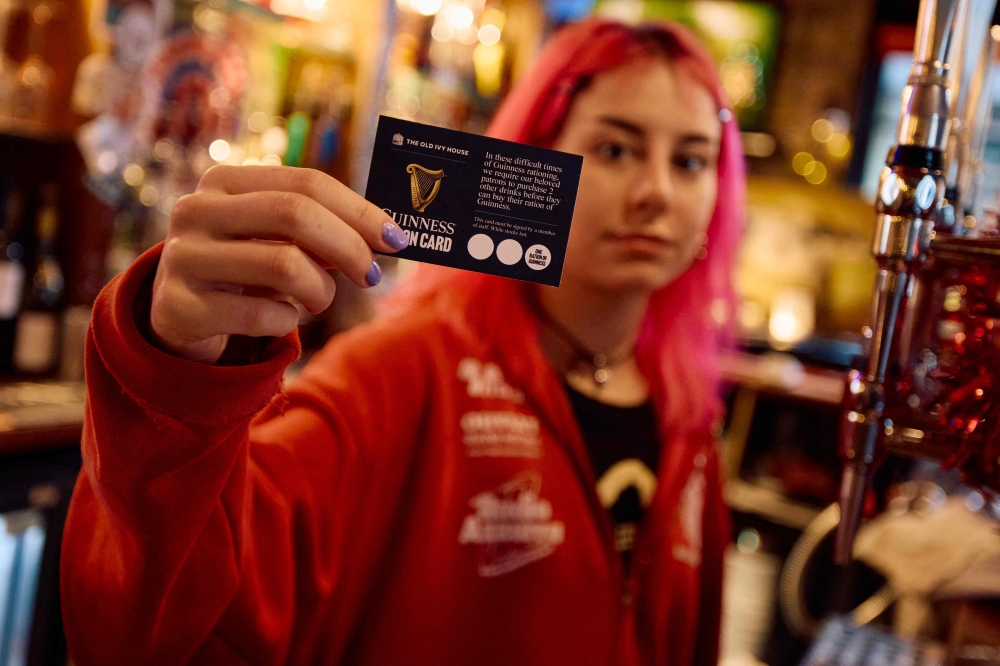By The Malketeer
From Viral Trends to Empty Taps: Guinness Becomes the Most Wanted Drink in Britain This Christmas
In a pub drama that could rival a holiday soap opera, Britain’s beloved Guinness has gone from being a bar staple to a rare commodity.
With soaring sales and a viral craze to blame, UK pubs are rolling out ration cards, leaving stout enthusiasts clutching their pint glasses in disbelief.
Tapped Out: Guinness Ration Cards Hit London Pubs
At The Old Ivy House in London’s Clerkenwell, an “empty upside-down Guinness glass” has become the symbol of a nationwide crisis.
Landlady Kate Davidson, co-owner of the cosy pub, has taken matters into her own hands—issuing Guinness ration cards to manage dwindling supplies.
But even with this quirky initiative, taps are running dry faster than you can say “Split the G.”
“This is Christmas!” exclaimed Davidson, clearly blindsided by the shortage during the busiest drinking season of the year.
“I wouldn’t have expected them to run out now.”
Her rationing system?
Customers must purchase two other drinks before being eligible for the coveted pint of Guinness.
The tongue-in-cheek ration card even nods to “these difficult times of Guinness rationing.”
‘Guinnfluencers’ and the Gen Z Gold Rush
What’s behind this pint-sized panic?
A clever marketing shift by Diageo, Guinness’s parent company, has transformed the once-rugged, rugby-lovers’ drink into a millennial and Gen Z must-have.
“Guinnfluencers” on Instagram and TikTok, including none other than Kim Kardashian, have helped fuel the stout’s popularity among younger women.
Viral drinking challenges like “Split the G”—where you sip Guinness to align the liquid perfectly with the logo on the glass—have further propelled demand.
The numbers tell the story: Guinness consumption has surged by 24% among women, with overall UK sales up nearly 21% between July and October.
While great for brand equity, it’s a recipe for pub owners’ nightmares.

Barrels of Trouble: A Brewery Bottleneck
To manage the Guinness gold rush, Diageo has had to ration barrels to British pubs.
For Davidson, this meant her usual order of seven or eight barrels was slashed to four.
And even with strict rationing, her taps were bone dry by Friday night.
Shaun Jenkinson, Operations Director for Katie O’Brien’s chain of Irish pubs, echoed Davidson’s plight, receiving just 70% of his required stock.
“Wholesalers are now warning of more shortages leading up to Christmas,” he lamented.
“Keep Guinness for the Old Folks!”
Not everyone is thrilled about Guinness’s newfound popularity.
At The Old Ivy House, 79-year-old author Howard Thomas shared his gripes with AFP: “Stop young people drinking Guinness and there won’t be this problem. Keep it for the old people.”
While Howard’s plan might not pass as an age-friendly marketing strategy, it highlights the growing generational tension as the stout evolves into a trend-driven drink for younger audiences.
Marketing Lessons: When Demand Outpaces Supply
Diageo’s marketing push has been wildly successful, but the Guinness shortage raises important questions about managing supply chains during unexpected demand spikes.
While leveraging “Guinnfluencers” and viral trends works wonders for engagement, balancing production to meet demand remains critical to brand reputation.
For marketers, this is a timely reminder: when campaigns work too well, brands must prepare to handle the tidal wave of consumer enthusiasm—or risk leaving customers, quite literally, thirsty for more.
As Guinness fans count down to the next delivery, the viral stout craze serves as both a marketing masterstroke and a cautionary tale.
For now, Britons will have to raise a glass of something else—perhaps a Bloody Mary—while dreaming of their next pint of the creamy, black stuff.
Source: AFP
MARKETING Magazine is not responsible for the content of external sites.











